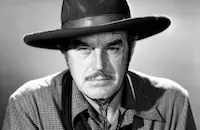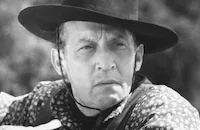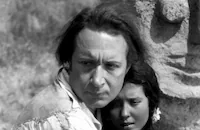After the completion of North West Mounted Police (1940), DeMille focused on his new project, The Queen of Queens, a story about the Virgin Mary, but was unable to resolve numerous script problems. Instead, he decided to make a movie about shipwrecks and deep-sea diving based on a serial by Thelma Strabel that had appeared in the Saturday Evening Post. Remaining true to the original setting, DeMille filmed some sequences on location in Key West, Florida, not far from the area where he shot his first version of The Buccaneer in 1938. He also planned on using a live octopus for the sequence where Ray Milland is attacked underwater. But he ended up settling for a huge mechanical squid, which was operated by a twenty-four button electrical keyboard with a complex system of hydraulic pistons used to activate the thirty-foot tentacles of the squid. While filming the sequence, DeMille communicated by a loudspeaker to direct the technicians in the movement of the creature while at the same time barking orders to Milland and John Wayne underwater through telephone wires in their helmets (Wayne would later battle another underwater sea creature in Wake of the Red Witch, 1948).
Other scenes in Reap the Wild Wind which posed problems were the shipwreck and shots of the vividly colored underwater kelp. For the former, DeMille wanted to simultaneously capture the shipwreck, the churning sea, and the stormy sky in the same shot. This was accomplished by shooting the segments separately and then projecting them on three different projectors with fused quartz lenses onto a background where the movements were synchronized. For the kelp, DeMille used yards and yards of iridescent silk that would weave about in the ocean depths. Unfortunately, the color of silk changes in sea water so DeMille's production team, headed by cinematographer Victor Milner, had to use fresh silk every day, then dry it out, and have it dyed back to its original shade for reuse. Needless to say, the sequence took a month to photograph but due to such painstaking detail, Milner's cinematography received an Oscar nomination that year.
The casting of Reap the Wild Wind is equally interesting and features DeMille's penchant for mixing big name stars like John Wayne with up-and-coming performers like Susan Hayward and established character actors like Charles Bickford and Louise Beavers. For one ballroom sequence, DeMille even cast some of his former silent film associates as extras like Maurice Costello, Elmo Lincoln, Monte Blue, and director George Melford.
In the biography, Cecil B. DeMille, author Charles Higham wrote that "John Wayne was extremely ill-at-ease about acting in a DeMille picture; he did not relish being shouted at on the set. He had applied for the role of Wild Bill Hickok in The Plainsman and had been turned down (DeMille's only remark had been, "You were in The Big Trail weren't you? A lot of water has gone under the bridge since then.") When he was offered the role played by Preston Foster in North West Mounted Police he had told DeMille's emissary: "Just tell Mr. DeMille too much water has flowed under the bridge for me to want that role." DeMille was provoked, and when Reap the Wild Wind came along, firmly offered him the part. "The only reason you called me here is to make Ray Milland look like a man," Wayne said. "That's right," DeMille replied. After some wrangling, Wayne accepted the role, and they became good friends."
Producer: Cecil B. DeMille, Buddy G. DeSylva (executive), William H. Pine (associate)
Director: Cecil B. DeMille
Screenplay: Charles Bennett, Jesse Lasky Jr., Alan Le May, Jeanie Macpherson (uncredited), Thelma Strabel (story)
Art Direction: Roland Anderson, Hans Dreier
Cinematography: Victor Milner, William V. Skall
Costume Design: Natalie Visart
Film Editing: Anne Bauchens
Original Music: Victor Young
Cast: Ray Milland (Stephen Tolliver), John Wayne (Captain Jack Stuart), Paulette Goddard (Loxi Claiborne), Raymond Massey (King Cutler), Robert Preston (Dan Cutler), Charles Bickford (Bully Brown), Louise Beavers (Maum Maria).
C-123m.
by Jeff Stafford


















































